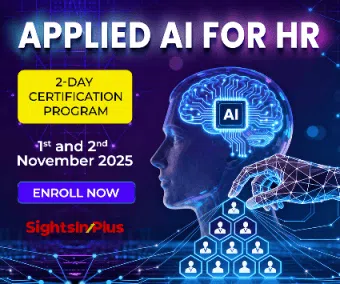Over the past two decades, work and workplaces have undergone a huge transformation. Digital tools, artificial intelligence, hybrid work, and globalized teams have changed how work gets done. In an era of rapid workplace evolution, the relentless advance of analytics, AI-powered feedback systems, and employee experience (EX) metrics promises to optimize every aspect of organizational life.
Yet, as we adopt ever more sophisticated ways to track sentiment, productivity, and engagement, we must ask whether these tools are advancing the human experience of work—or merely refining our surveillance of it.?
This question gets to the heart of the human–work relationship. Work is not just a means to an economic end; it shapes identity, purpose, and well-being. And yet, in too many organizations, work is still designed primarily around processes, metrics, and profit — with people treated as a resource to be managed, rather than individuals to be empowered.
The measurement of work, from classic time–motion studies to modern EX analytics, has always aimed to improve efficiency and, in theory, satisfaction. Today’s platforms can offer real-time feedback, track full-journey sentiment, and surface friction points rapidly. AI-driven EX tools promise to identify and resolve issues before they escalate, reducing employee burnout and turnover.
But here lies the paradox: while measurement provides essential insights, the act of measuring does not itself create a better workplace. Instead, it reflects what is valued and optimized. If organizations focus primarily on what is easily quantifiable—KPIs, time-on-task, survey sentiment—they risk narrowing their definition of the “employee experience” to what can be measured, not what truly matters to people.
Work design is a discipline focused on shaping roles, processes, and environments to foster high performance and human flourishing. The most respected work/design models focus on job characteristics that lead to workforce engagement and employee satisfaction with respect to skills diversity, task identity and significance, autonomy, and feedback, coaching & mentoring. These principles nurture motivation, creativity, and connection.
The modern workplace has the flexibility to function under numerous options and scientific work designs. Technology enables flexibility, collaboration, and creativity on a global scale — but only when the work is intentionally designed around human needs such as purpose, autonomy, learning, and connection. Forward-thinking organizations are recognizing that meaningful work is not only a moral responsibility but also a competitive advantage.
Reimagining Work: Human‑First Approaches for Future‑Ready Organizations
In 2025, forward‑thinking companies understand that true productivity stems from supporting the well‑being of the people who power the organization. The age of designing workplaces purely for efficiency is giving way to a new era—one that balances flexibility, natural inspiration, personal autonomy, and purposeful use of technology.
Here, measurement becomes a tool for guidance rather than an end in itself, providing insights that drive the continuous improvement of the employee experience.
A Shift in Workplace Design
The most effective organizations are embracing an environment where people—not metrics—set the pace of progress. This transformation is anchored in several key themes:
Adaptable Environments
Workspaces are created with modularity in mind, transforming seamlessly for different activities, projects, and personal working styles. This flexibility allows teams and individuals to choose the configuration that suits their current goals.
Nature‑Driven and Eco‑Friendly Elements
Incorporating features like abundant natural light, living greenery, and responsibly recycled or repurposed materials brings a calming, restorative quality to offices. This biophilic approach reduces stress while enhancing creativity and focus.
Empowerment Through Technology
Advanced tools, including AI systems and IoT devices, are deployed to enhance comfort, streamline operations, and allow people to perform at their best. Crucially, these systems are used as supportive partners—not as instruments of constant surveillance.
Data With Purpose
Modern workplace measurement is evolving beyond chasing numerical targets. Employee feedback, surveys, and sentiment analysis now serve as ways to actively listen, uncover hidden friction points, and address them.
Yet data alone cannot reveal the full human story. Without context, metrics risk masking deeper issues such as burnout, disengagement, or lack of purpose. True progress happens when employees help define what is measured and see tangible action as a result of their input.
Principles for Creating Meaningful Work
Organizations that lead with empathy and intentionality share common design practices:
- Co‑Creation – Employees participate directly in shaping both their roles and their physical or digital workspaces, fostering ownership and stronger engagement.
- Broader Success Metrics – Achievement is defined not only by outputs and efficiency but also by creativity, learning, collaboration, and personal growth.
- Trust and Transparency – Data collection and feedback practices are open, clearly explained, and always tied to real changes in policy or environment.
- Ongoing Development – Investment in continuous learning, mentorship, resilience training, and peer support ensures career longevity and adaptability.
- The Choice Ahead – As the future of work unfolds, organizations face a defining choice:
Continue optimizing for systems, processes, and metrics alone, risking the erosion of human connection and purpose. Or consciously design work around human potential, encouraging purpose, belonging, flexibility, and advancement.
Those who choose the second path will not only cultivate healthier, more engaged teams but also lay the groundwork for sustainable, long‑term success. At its most profound level, work exists to advance human aspirations and well‑being.
Everything else, no matter how refined, is merely better counting.
Note: We are also on WhatsApp, LinkedIn, and YouTube to get the latest news updates. Subscribe to our Channels. WhatsApp– Click Here, YouTube – Click Here, and LinkedIn– Click Here.



